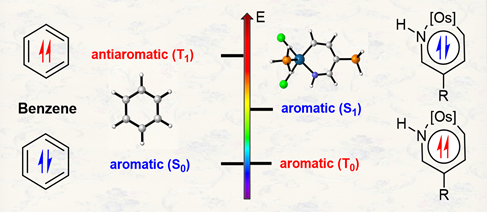A Triplet Iron Carbyne Complex
Submitted by Jun Zhu on Fri, 11/17/2023 - 08:17
Tuning the spin state of metal carbynes, which have broad applications in organic synthesis and material science, presents a formidable challenge for modern chemists as the strong field nature of carbyne ligands dictates low-spin ground spin states (S = 0 or 1/2) for known metal carbynes. Through the oxidative addition reaction of a low-coordinate iron(0) N-heterocyclic carbene complex with the C−S bond of a thioazole-2-ylidene, we synthesized the first triplet (S = 1) metal terminal carbyne, an iron cyclic carbyne complex.


